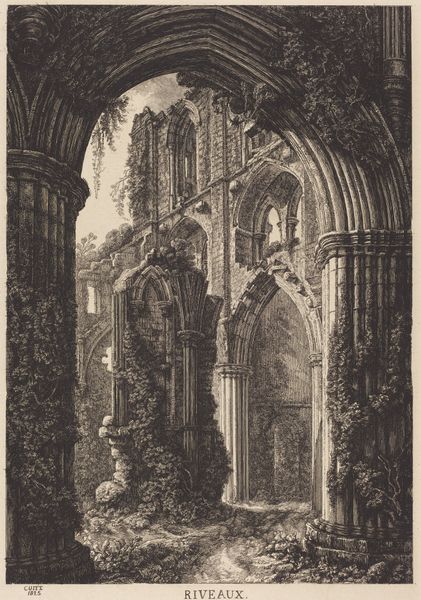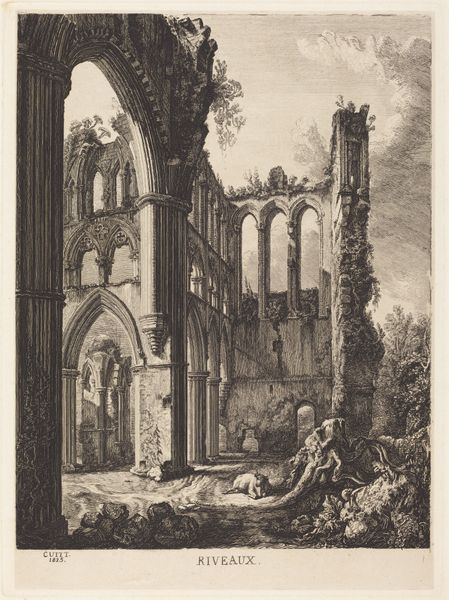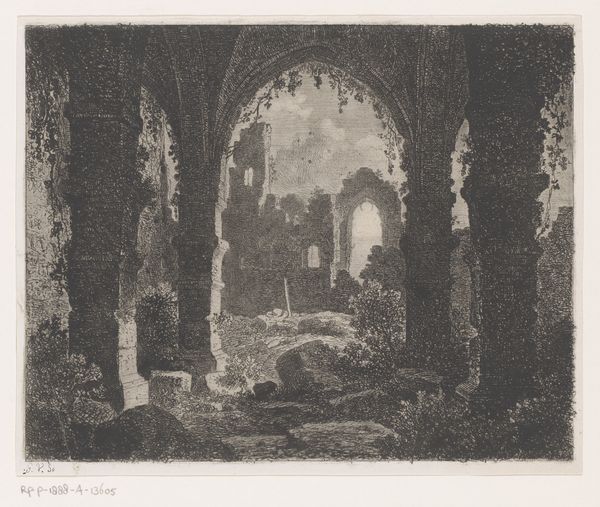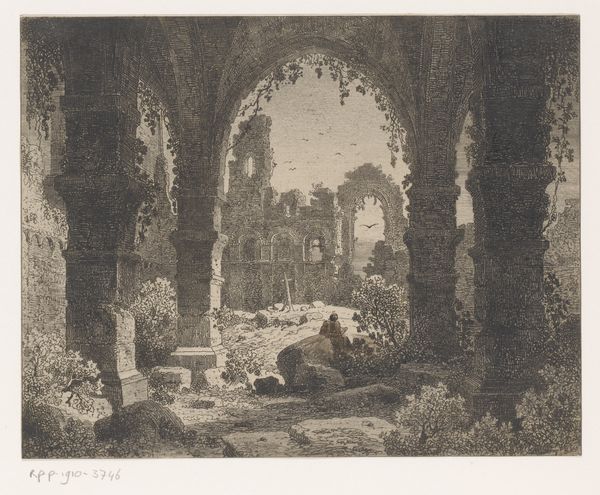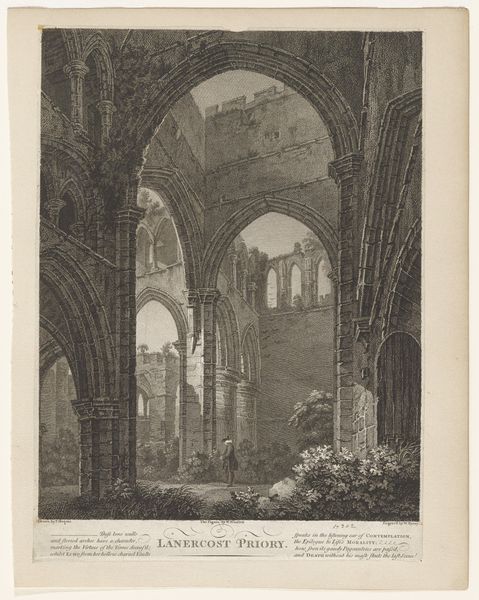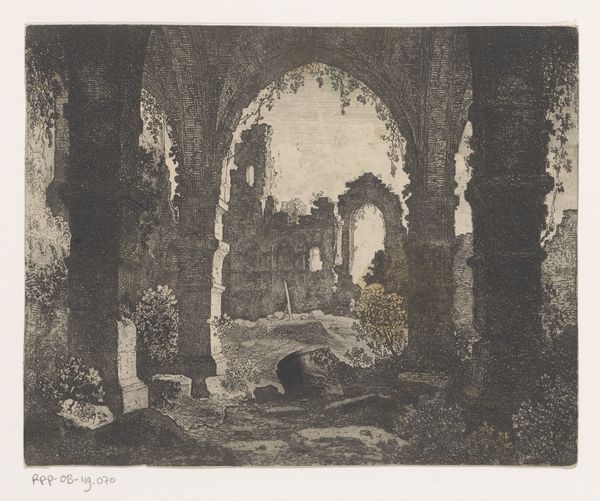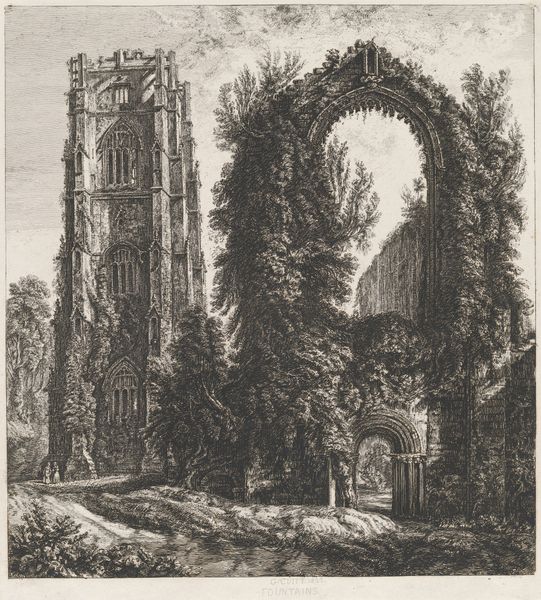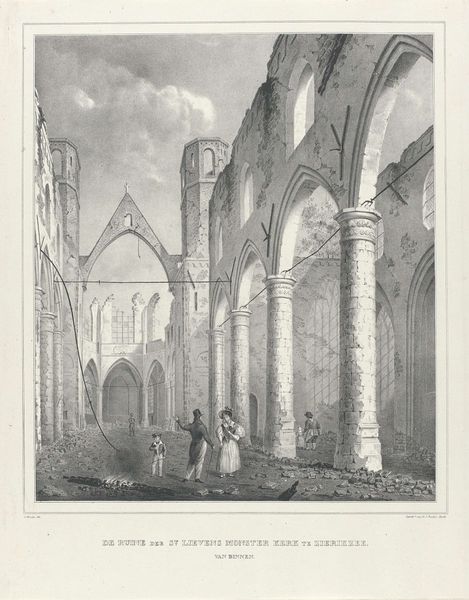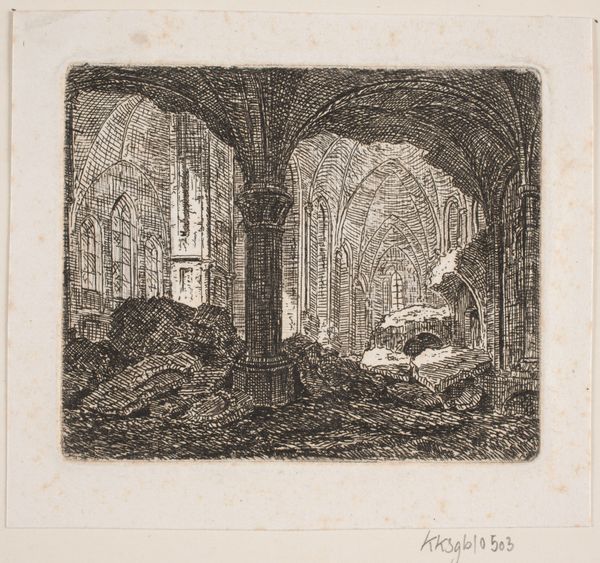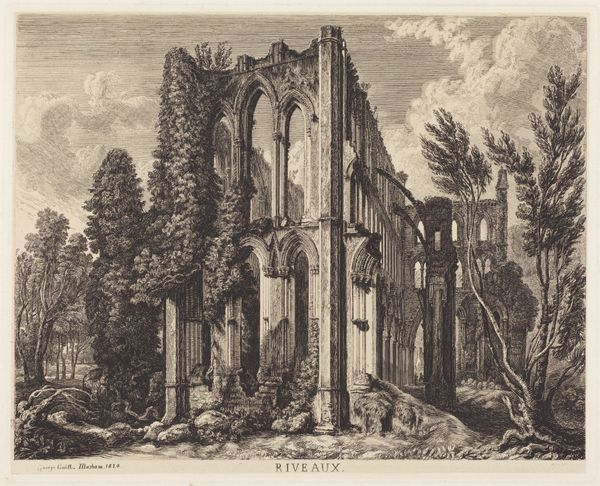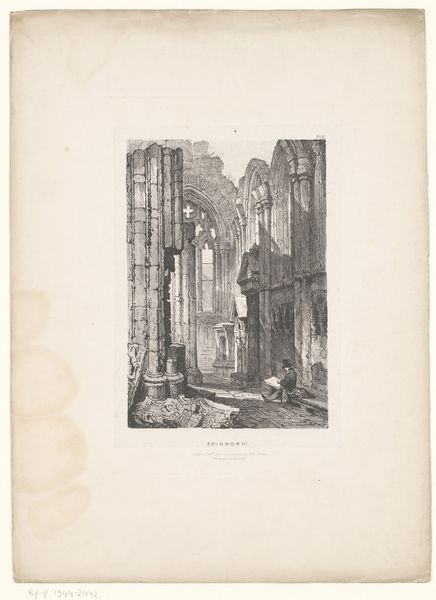
print, engraving, architecture
# print
#
landscape
#
romanticism
#
history-painting
#
engraving
#
architecture
Copyright: National Gallery of Art: CC0 1.0
George Cuitt the Younger created the etching, Riveaux, depicting the ruins of the medieval Riveaulx Abbey. Note the prominent columns and arches, the architecture of faith, now overtaken by nature’s insistent vines. The ruin, as a motif, is potent, a symbol of transience and the cyclical nature of existence. Consider the Roman Forum, once the heart of an empire, now standing as a testament to the fallibility of human achievement. This motif, as seen here, appears throughout art history, resonating deeply with our collective unconscious. Like the crumbling columns reclaiming by nature, this image evokes a complex mixture of melancholy and awe. We recognize the impermanence of human endeavors and the power of time. This feeling triggers subconscious memories and speaks to our deepest fears of decay and loss. It acts as a powerful memento mori, a reminder of our own mortality. The ruin persists, then, across centuries, each time colored by new cultural anxieties and hopes. It will continue to evolve, and thus return in art as a mirror reflecting our ever-changing relationship with time, memory, and decay.
Comments
No comments
Be the first to comment and join the conversation on the ultimate creative platform.
